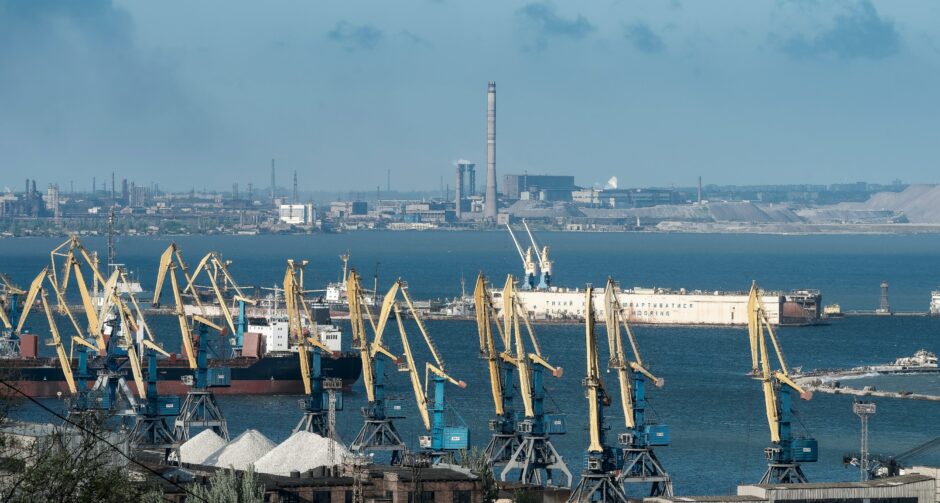A few years ago, there was a large court proceeding in Sweden concerning the environmental permit for Preem to construct a new facility for the production of fuel. This case is a prime example of how the media creates opinions regarding sustainable development, and how that can be dangerous from an environmental perspective.
We live in a fast-paced world that is ever-changing. In a world like that, it is of course difficult to stay perfectly informed about everything, just as it is difficult to present all relevant facts in the media. The competition between different media is stronger than ever, where exposition and profit depend on being the first to cover a story and making sure people click on your article.
Preem is a Swedish oil refining company that produces fuel for different kinds of vehicles; cars, trucks and ships. In 2016, they started drafting and planning a new facility to meet the new rules on the allowed amount of sulphur in marine fuels imposed by the International Maritime Organisation (IMO). The IMO rules were adopted in 2020 and lowered the allowed amount of sulphur in marine fuels from 3.5% to 0.5% worldwide. Preem was seeking approval to build a Slurry Hydrocracker which allows very difficult compounds, such as heavy oil, to be refined and used as transportation fuel for vehicles. The Slurry Hydrocracker makes it possible to reduce the level of sulphur in heavy oil to the extent that the new regulations on marine fuels can be fulfilled. Since these rules are being implemented by a large international actor, it is safe to say that we as a society have an interest in these rules being implemented and followed. The Slurry Hydrocracker would also open up doors to potentially use sustainable sources, such as lignin, to produce fuel. Lignin is a bi-product of the paper industry and is mainly incinerated today to produce heat and electricity, because it consists of compounds similar to those in heavy oil and are difficult to break and refine. However, none of this got much coverage at all in the media, not even the actual reason behind the application; to build a facility that can produce marine fuels that comply with the IMO rules. In fact, some information was incorrectly represented. Some media outlets claimed the company would increase their crude oil intake by 2,5 million cubic metres per year. Preem was producing 2,5 million cubic metres per year of high sulphur heavy fuel oil at their facility during the production of transportation fuels, and it was this heavy fuel oil they wished to refine in the new facility. With the Slurry Hydrocracker, Preem would have been able to transform up to 90% of this heavy fuel oil to sulphur-free transportation fuel, instead of burning it for the purpose of producing electricity and heat, or for marine fuels with high sulphur levels, which would in any case no longer be allowed.

What the media especially latched onto was the increase in CO2-emissions on-site: 1 million tons per year. And that is where the media coverage would end, with no mention of the CO2-reduction on the user level, which would compensate for almost half of the increased emissions on site, nor the use of Carbon Capture and Storage technique (CCS) to reduce the emissions on-site by at least 50%. It got to a point where a small-scale conspiracy on the same wavelength as flat-earth and anti-vax developed. People living in the town next to the facility were scared they would get sick in one form or another, due to increased on-site emissions of CO2, particles, and hydrocarbons. It ranged from respiratory problems to cancer. This is where it gets dangerous; when the general people get so misinformed they gain irrational fears. On a larger scale, it becomes dangerous for the environment, as this kind of selective information representation creates a skewed opinion.
Sustainable development, and how to go about it, is a very complicated subject where experts have different opinions and the solutions are not inherently wrong. But since this is such a complicated subject and there are many potential solutions that could work, the media has a special role in informing the general public in an objective way, especially in a world that is becoming increasingly populistic and polarised. Companies associated with negative impacts on the environment get judged just on that, despite their shown efforts of moving towards becoming more sustainable. This attitude, the cancel-culture that has risen over the past few years, is what will be the stick in our wheel. Our society, community, and economy are not constructed in a way that allows us to make radical changes, and we do not have time to argue too much about what a company should do instead. In the case of Preem, many argued they should either shut down their production or switch completely to producing biofuels. But what happens with the oil that is not being refined by Preem? The demand for oil products will still be here for some time, and so it is going to be bought by some other company. Probably by a company in a country that does not have the same restrictions and regulations on how oil should be refined, leading to a greater negative impact on the environment. That does not solve the problem, it only moves it somewhere else and likely worsens the situation. The European Union (and Sweden in particular) has the tightest restrictions on fuel production from fossil resources. In a global bench-marking study made by Solomon in 2015, it was found that Preem’s two refineries have on average 17% less CO2-equivalent emissions, 72% less nitrogen oxides emissions, and 94% less sulphur oxides emissions compared to the average refinery in western Europe. This puts them among the most energy-efficient and environmentally focused refineries in Europe, effectively making them one of the most capable companies to handle fossil-based products.
The key to fast and effective adjustment to reach the UN’s Sustainable Development Goals (SDGs) is to find as many common denominators as possible and change those, instead of changing whole systems; we do not have time or the resources to completely restructure how our society works. To do that, we need to be realistic, we need to think critically, and most importantly, we need to spread information. Now more than ever, it is the general public that decides. The people have incredible power. It was because of the general public that the case went to the highest deciding instance in Sweden; the government. The case went beyond the environmental courts’ all instances and in the end, it was the government that had the deciding rule. It went beyond law and objective ruling, to a political one. The message from the people was clear; they did not want to allow Preem to build this new facility because they are ‘in the oil business’, because ‘the emissions on-site would increase by 1 million tons’, and because ‘they are green-washers’. Two of those statements are true but are missing context and the last one is an opinion that is more than likely based on incomplete information. However, the government wanted the opinion of the highest instance of the environmental court to base their decision on, and the court was of the opinion that Preem should be allowed to build the facility. This was in the year 2020, and by that time the market situation had changed so vastly that Preem withdrew the application before a formal ruling could be made because the project was deemed to no longer be profitable. Unknowingly, the people had in essence said ‘no’ to a more efficient use of heavy oil, reduction of environmentally damaging emissions, further development and use of CCS technique, and a step closer to expanding biofuel sources that are too difficult to process in the facilities used today.
The Slurry Hydrocracker would have allowed Preem to process biofuels and, eventually, to gradually move to only producing biofuels. The biofuel that theoretically could have been produced in this facility is one that could work in a normal gas or diesel engine, one made from heavy compounds such as lignin. Now, creating gas or diesel from sources like lignin that can be used in normal gasoline and diesel engines is still in the experimental phase, but investing in a technology like this could be ground-breaking if it turns out to work. It has been done on an experimental level, what remains is how to industrialise and mass-produce it. A Slurry Hydrocracker has the potential to do this, and by not allowing this facility to be built both the research and testing have been set back a number of years. A bio-based fuel that can be used in ignition motors, whether that be gasoline, biogas, or diesel, would be a significant leap forward in combating CO2-emission levels, since the emissions from the transportation sector are one of the largest. It would also mean that we would not have to rely on exchanging the majority of cars that drive on the roads today or spend enormous finances on expanding the electrical network for electrical cars. You would simply use a different pump at the gas station. If the media had more objectively covered the facts provided in this text, the public debate surrounding the court proceedings would have looked very different. However, each individual also has a responsibility to inform themselves, especially if it is something they wish to express an opinion on, but the world we live in is stressful and fast-paced. Many people do not have the time to fact-check everything they read, but it is as easy as breathing to express your opinion online. It has come to a point where the situation has become dangerous and we need to take a step back and think twice about what we are actually contributing to. We have to try to not judge everyone so fast, to think critically and to be realistic. Every little step counts when it comes to realising the SDGs and adjusting to environmental change. The result of this environmental permit process was not a small step in the right direction. It was a stumble, and it could have become a leap.



